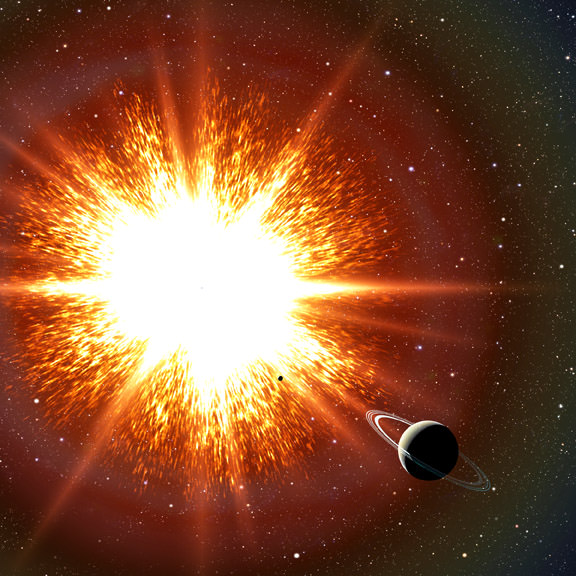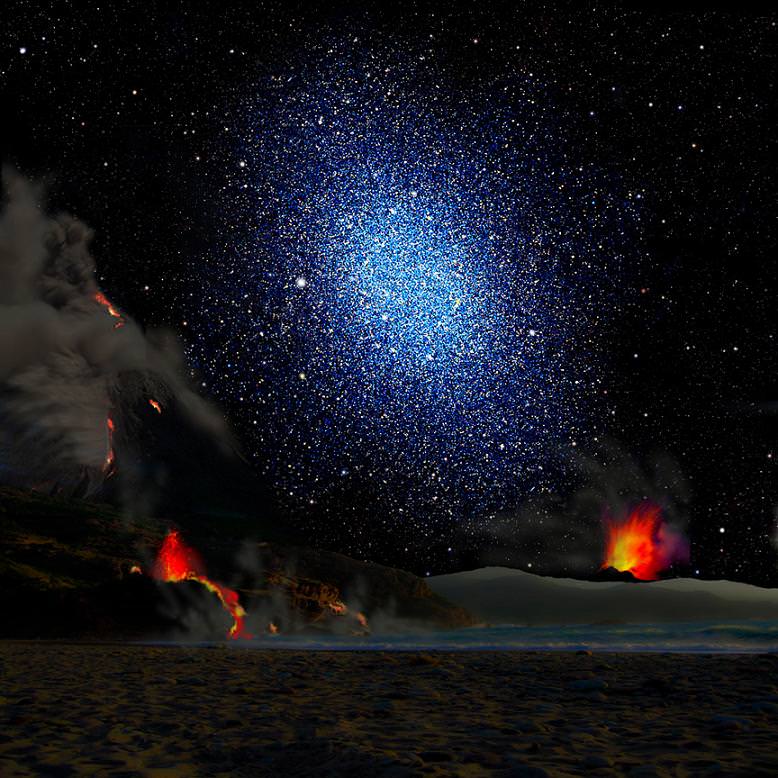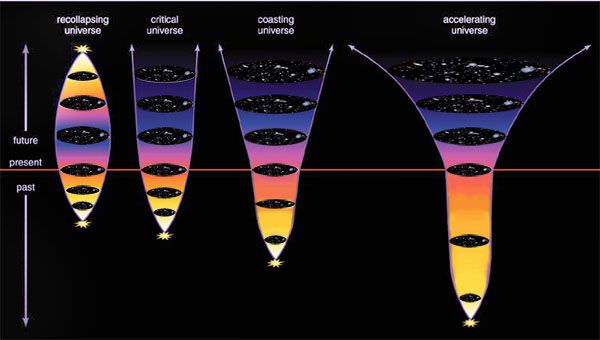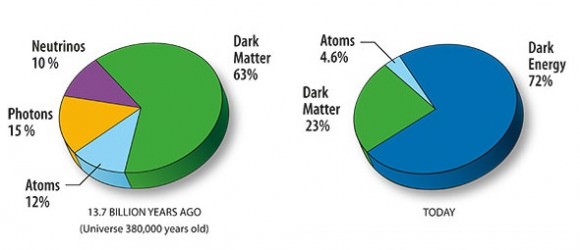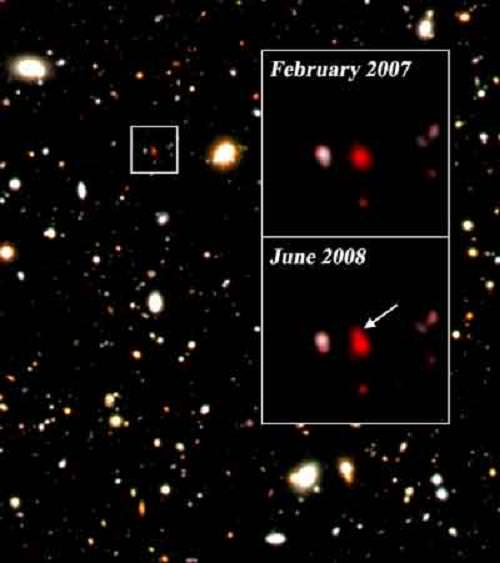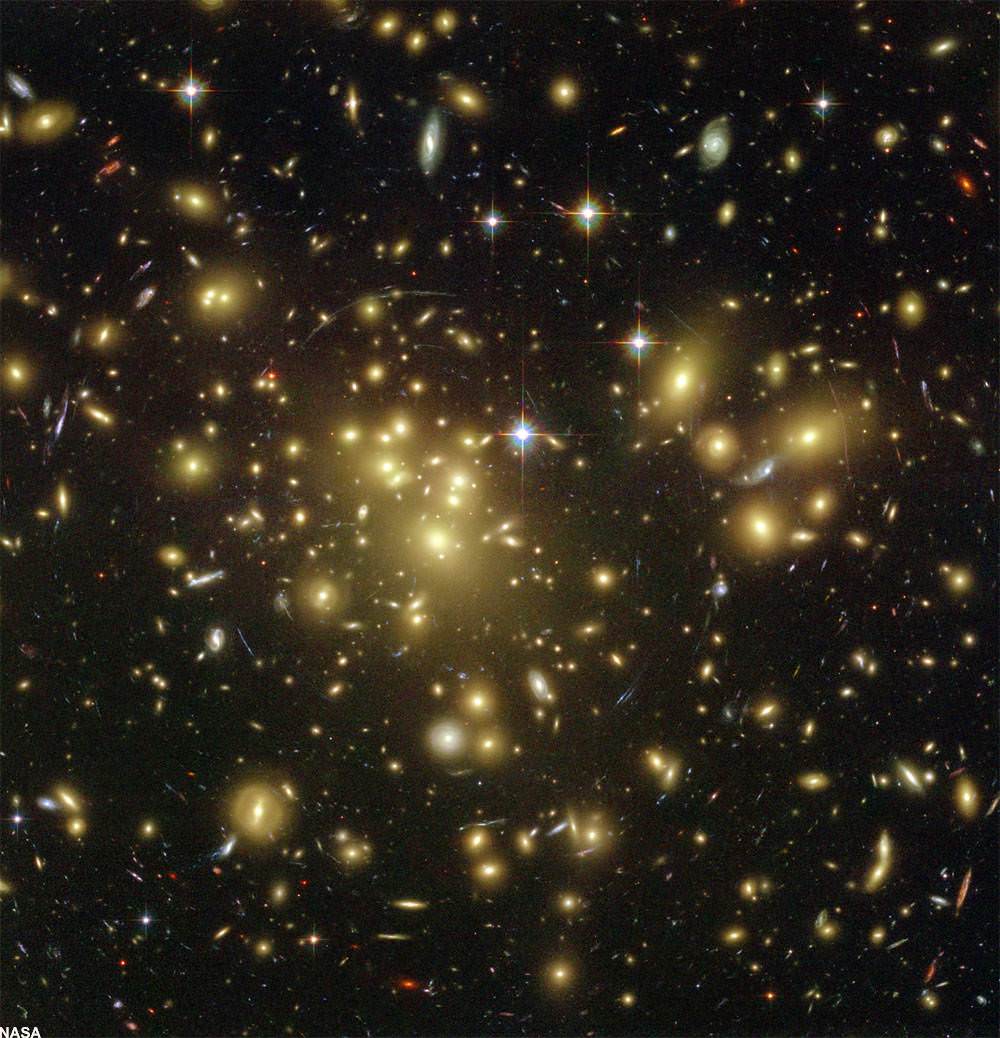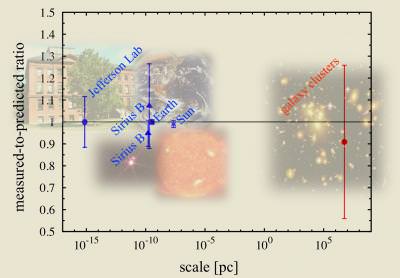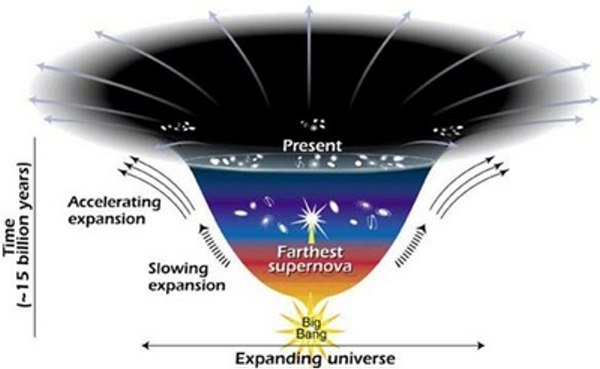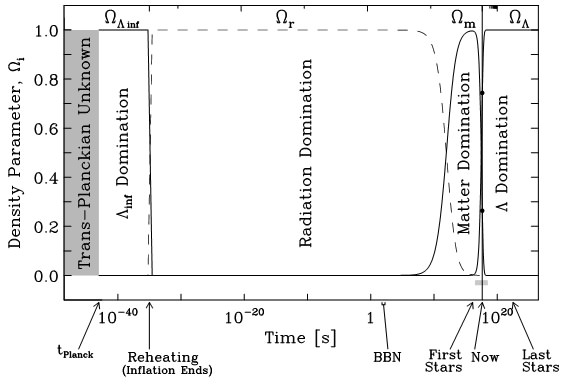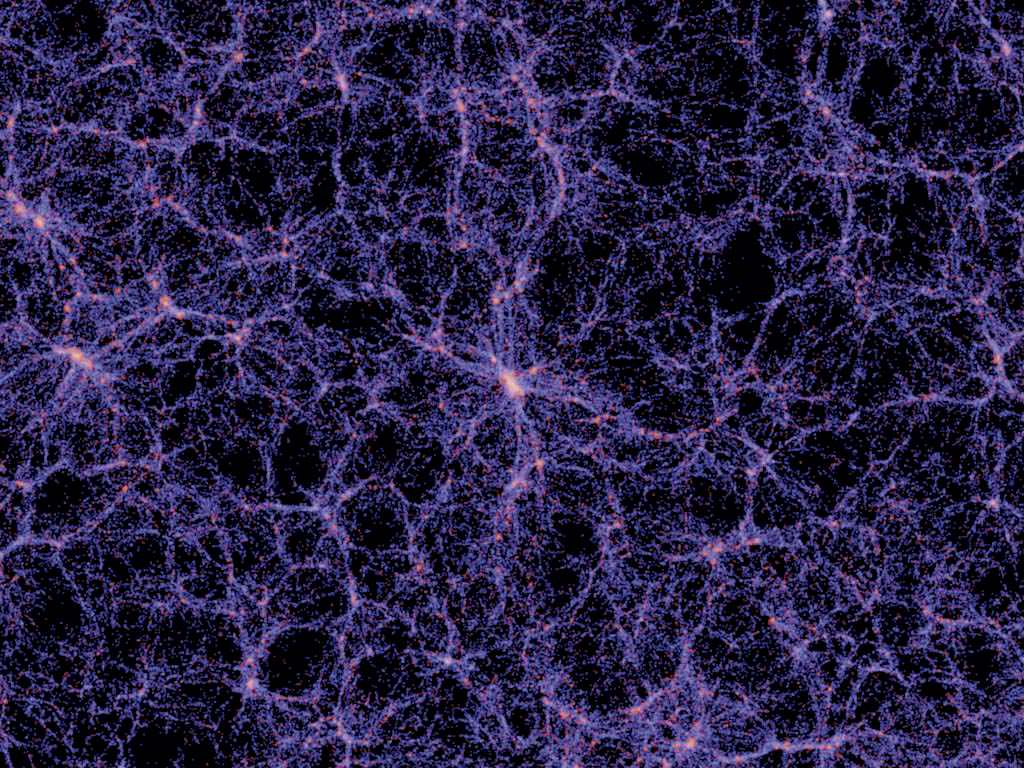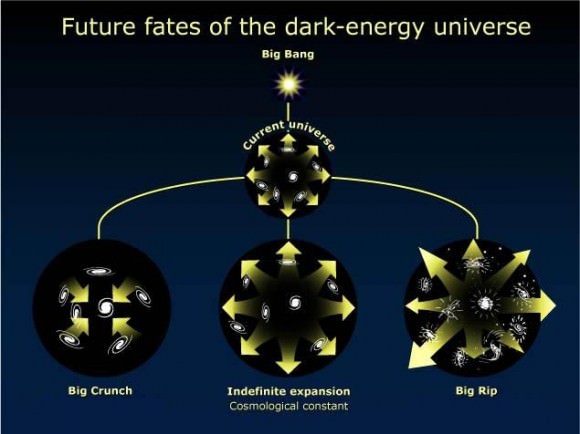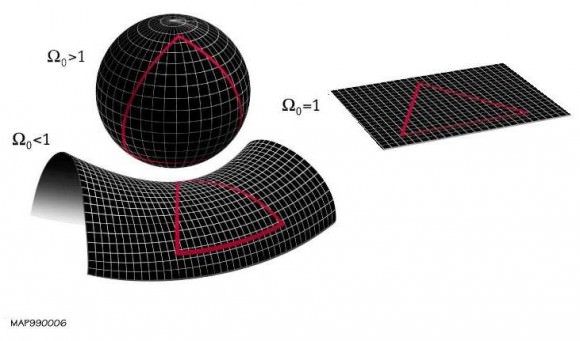[/caption]Let’s face it, cosmologists catch a lot of flack. It’s easy to see why. These are people who routinely publish papers that claim to ever more finely constrain the size of the visible Universe, the rate of its breakneck expansion, and the distance to galaxies that lie closer and closer to the edges of both time and space. Many skeptics scoff at scientists who seem to draw such grand conclusions without being able to directly measure the unbelievable cosmic distances involved. Well, it turns out cosmologists are a creative bunch. Enter our star (ha, ha): the Type 1a Supernova. These stellar fireballs are one of the main tools astronomers use in order to make such fantastic discoveries about our Universe. But how exactly do they do it?
First, let’s talk physics. Type 1a supernovae result from a mismatched marriage gone wrong. When a red giant and white dwarf (or, less commonly, two white dwarfs) become trapped in a gravitational standoff, the denser dwarf star begins to accrete material from its bloated companion. Eventually the white dwarf reaches a critical mass (about 1.4 times that of our own Sun) and the natural pressure exerted by its core can no longer support its weight. A runaway nuclear reaction occurs, resulting in a cataclysmic explosion so large, it can be seen billions of light years away. Since type 1a supernovae always result from the collapse of a white dwarf, and since the white dwarf always becomes unstable at exactly the same mass, astronomers can easily work out the precise luminosity of such an event. And they have. This is great news, because it means that type 1a supernovae can be used as so-called standard candles with which to probe distances in the Universe. After all, if you know how bright something is and you know how bright it appears from where you are, you can easily figure out how far away it must be.
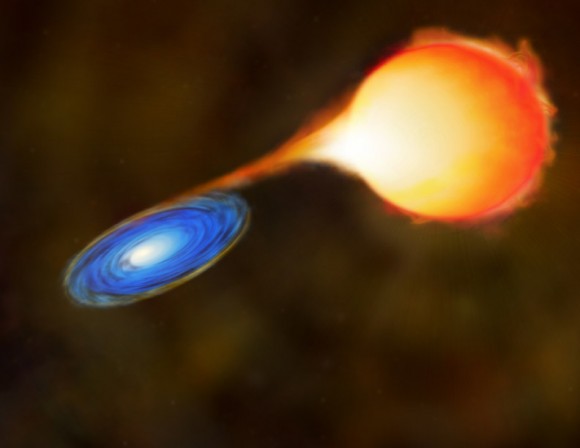
Now here’s where cosmology comes in. Photons naturally lose energy as they travel across the expanding Universe, so the light astronomers observe coming from type 1a supernovae will always be redshifted. The magnitude of that redshift depends on the amount of dark energy that is causing the Universe to expand. It also means that the apparent brightness of a supernova (that is, how bright it looks from Earth) can be monitored to determine how quickly it is receding from our line of view. Observations of the night sky will always be a function of a specific cosmology; but because their distances can be so easily calculated, type 1a supernovae actually allow astronomers to draw a physical map of the expansion of the Universe.
Spotting a type 1a supernova in its early, explosive throes is a rare event; after all, the Universe is a pretty big place. But when it does happen, it offers observers an unparalleled opportunity to dissect the chaos that leads to such a massive explosion. Sometimes astronomers are even lucky enough to catch one right in our cosmic backyard, a feat that occurred last August when Caltech’s Palomar Transit Factory (PTF) detected a type 1a supernova in M101, a galaxy just 25 million light years away. By the way, it isn’t just professionals that got to have all the fun! Amateur and career astronomers alike were able to use this supernova (the romantically named PTF11kly) to probe the inner workings of these precious standard candles. Want to learn more about how you can get in on the action the next time around? Check out UT’s podcast, Getting Started in Amateur Astronomy for more information.

